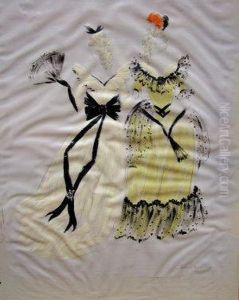Sophie Fedorovitch Paintings
Sophie Fedorovitch was a Russian-born British costume and set designer known for her work in ballet, opera, and theater in the early to mid-20th century. Although not as widely recognized as some of her contemporaries, her contributions to the performing arts, particularly her collaborations with important figures of the ballet world, were significant.
Born in 1887 in Russia, Fedorovitch moved to London in the 1910s, during a period of great innovation and cross-cultural exchange in the arts. She became associated with the Ballets Russes, a groundbreaking ballet company led by impresario Sergei Diaghilev, which brought Russian ballet to the West and revolutionized the art form. While she did not work directly for the Ballets Russes, its influence permeated her artistic vision and style.
Fedorovitch established her reputation in the 1920s and 1930s, and her career was closely tied to the development of British ballet. She worked extensively with the Vic-Wells Ballet, which later became the Sadler's Wells Ballet and subsequently the Royal Ballet. Her partnership with choreographer Frederick Ashton was particularly fruitful, and together they created a number of ballets that are still performed today. Her designs were known for their elegance, simplicity, and sensitivity to the dancers' movements, enhancing the overall aesthetic and narrative of the ballets.
During her career, Fedorovitch also made significant contributions to opera and the theater. She worked with the Royal Opera House in Covent Garden and designed for several London theaters. However, ballet remained her primary focus and the field where her legacy is most deeply felt.
Tragically, Sophie Fedorovitch's life was cut short when she died in a house fire in 1953. Despite her untimely death, her work continues to be celebrated for its timeless quality and its impact on the visual language of ballet and theater design. Her collaborations with major figures of the performing arts world have left an indelible mark on the history of stage design.

